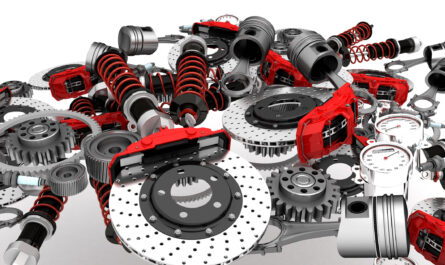Liquid Filling Machines
Liquid filling machines are designed to fill liquids like water, juices, sauces, beverages and more into bottles, cartons, bags or other liquid packaging containers. They can fill products at very high speeds ranging from 50-1500 containers per minute depending on the machine type and configuration. Rotary filling machines are best suited for high speed filling of carbonated soft drinks and water. Piston fillers are widely used for juices, edible oils and syrups. Aseptic filling machines maintain product sterility during filling which is essential for shelf-stable products.
Paste and Viscous Product Filling Machines
Paste and viscous product fillers are specialized filling machines to handle filling of thick products like yogurts, creams, pastes, gels and more into cups, tubs or pouches. They use positive displacement technology which accurately fills viscous or semi-solid products without compromising package integrity or introducing air pockets. Filling accuracy is ensured using volumetric or weight based filling techniques. Dual head piston fillers are commonly used for products like peanut butter orNutella across markets.
Powder and Granular Filling Machines
Powder and granular product filling machines employ volumetric, gravimetric or loss-in-weight techniques to precisely fill powders like flours, spices, nutritional supplements, pet food, detergents and more into bags, pouches, bottles or boxes. Loss-in-weight counters ensure error free filling. Vibratory feeders provide metered flow of powders into the filling chamber. Sachet machines adeptly fill single serve sachets at high speeds. Customized filling equipment meet stringent filling regulations across food, pharmaceutical and chemical industries.
Key Components of Filling Machines
Filling heads
The Filling Machines heads dispense the exact amount of product into containers based on pre-programmed settings. Volumetric heads control fill volumes while gravimetric heads ensure correct fill weights. Common filling head technologies employed include piston fillers, rotary fillers and auger fillers.
Feed Systems
Feed systems supply uninterrupted flow of products to the filling heads. Positive displacement pumps are used for liquids while screw, vibratory or gravity feeders facilitate powder/paste transfer. Precise feed control is critical for maintaining filling accuracy.
Control Systems
Programmable logic controllers (PLCs) help operate all filling machine motions and processes. Touch screen HMI interfaces facilitate setting/monitoring filling parameters. Batch counters track production quantities. Integration with MES/ERP systems aids traceability.
Utilities
Compressed air, product supply pipes, CIP systems for cleaning and steam sterilization facilities support seamless machine operations. Valves and fittings complete the machine plumbing.
Advantages of Filling Machines
– High output and productivity due to fast filling cycles
– Accuracy and consistency in fill weights and volumes
– Precision filling minimizes product loss/wastage
– Comply with food grade materials and wash down capability
– Automation reduces labor costs compared to manual filling
– Customizable to package type and process complexity
– Integrated quality control ensures fill parameters are within set limits
– Sophisticated monitoring/control maintains machines efficiency
– Hygienic design enables easier cleaning and maintenance
Applications
Food and Beverage
Liquid food filling machines are extensively deployed across sectors like dairy, juices, oils, sauces and seasonings. Powdered food fillers serve coffee, tea, flavored drink mixes and snack food industries.
Personal and Home Care
Fillers precisely fill a variety of products like shampoos, lotions, cleaners into bottles, pouches and more for personal and home care companies.
Pharmaceuticals
Aseptic and non-aseptic pharmaceutical vial, syringe and sachet filling lines maintain sterility during packaging of medicinal drugs and liquids
*Note:
1. Source: Coherent Market Insights, Public sources, Desk research
2. We have leveraged AI tools to mine information and compile it




